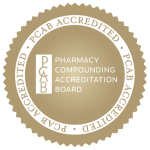Pharmaceutical compounding should play a much greater role in our nation’s healthcare system. Regulated by both the FDA and state boards of pharmacy, compounding is a science practiced by licensed pharmacists with advanced training in pharmaceutical chemistry who use FDA approved bulk active pharmaceutical ingredients (API’s) to create new compounded drug formulations. Access to safe compounded drugs is crucial because of:
- the growing number of drugs in short supply,
- the high costs of prescription drugs, and
- the rapidly accelerating out-of-pocket costs for drugs under insurance plans.
It is no news that in the recent years – due to a legislative environment that not only allows, but favors the lack of competition – many drug manufacturers took almost total control for drug pricing. This led to huge hikes in many drug prices, making them non-affordable for more than 80% of the patients that need them. For the same reason, most insurance companies refuse to cover these drugs, or they partially cover them with a very high co-payment for the patient.
Pharmaceutical compounding can offer not only safe and customized medications as alternative to high-priced prescription drugs, but affordable as well. This will lead to greater drug adherence for patients further leading to many lives saved in the long run.
This is by no means an exaggeration of reality. Here are the numbers to support this statement:
Each year, 125,000 Americans die from non-adherence, the direct result of high drug costs.
- “Nonadherence to medicines is also a major health care cost and quality problem, with numerous studies showing high rates of nonadherence directly related to poor clinical outcomes, high health care costs, and lost productivity.
- The cost of nonadherence has been estimated at $100 billion to $300 billion annually, including costs from avoidable hospitalizations, nursing home admissions, and premature deaths…
- Adherence is inversely proportional to the number of times a patient must take their medicine each day. The average adherence rate for treatments taken only once daily is nearly 80 percent, compared to about 50 percent for treatments that must be taken 4 times a day…
- Other research indicates that 33 to 69 percent of medicine-related hospital admissions are caused by poor adherence, with a resulting estimated cost as high as $100 billion a year.”
So, patient safety must be understood in this context to encompass access to affordable medicine. It is not enough to keep on bringing new and advanced drugs on the market if they are price-prohibitive.
It is sad and ironic that we live in a country with most advanced drugs and therapeutic technologies, but we cannot access them due to their prices.
The pharmaceutical compounding, done right, holds patient safety in a place of paramount importance, just as pharmaceutical manufacturers do.
The continued need for stringent safety regulation of all producers of prescription drugs remains clear. The recent enactment of the DQSA (Drug Quality & Safety Act) has strengthened that regulation for compounded drugs.
Moreover, it has provided a pathway for compounding companies to voluntarily submit to the highest level of FDA regulation and inspection, and to produce compounded drugs at the same cGMP standards as all FDA approved drugs.
The DQSA was passed in the wake of the NECC tragedy, which highlighted the risks of a small, unsupervised operation able to produce drugs unsafely in knowing violation 61 of the law.
And while the NECC example is representative of neither the pharmaceutical industry nor the compounding industry, we must keep in mind that more than 2,400 patient deaths per week are caused by adverse reactions to FDA-approved medications.
The challenge for safety regulation is not compounding or drug manufacturing per se, but rather ensuring that prescription drugs, however and wherever produced, follow a rational, reliable, and up-to-date set of rules that apply equally to branded, generic, over-the-counter and compounded drugs.
The current system does not fit this description.
While we all understand why safety regulation is, or rather should be, both for compounders and the manufacturers, let us not lose sight of how the current legislative environment creates more reasons for concerns in the healthcare industry than solves any problems.
We have just seen some of the consequences of the inadequacy of the current legislative environment in the health care industry translated in those huge dollar amounts we all pay for without any benefits.
Let us go back and analyze the primary, secondary and tertiary consequences of medication non-adherence:
- poor clinical outcomes – diverse causes
- high healthcare costs – leads to more emergency room visits, more hospitalizations, more admissions to nursing homes
- loss of productivity
Our focus will shift now on problem number one:
- Poor clinical outcome – is a direct result of nonadherence.
Let us see some other causes beside high priced drugs for nonadherence that will bring us to the need for the use of compounded medications;
- We live in a society with a growing number of “baby boomers”
- We live in a society of several chronic medical conditions’ epidemic
Where does this take the society?
To long-term poly-medication.
And let us see the numbers again: “The average adherence rate for treatments taken only once daily is nearly 80 percent, compared to about 50 percent for treatments that must be taken 4 times a day”
How can compounding help here?
Customized options allow combinations of multiple active ingredients in one product, making it easier for the patient to administer, increasing compliance, which means adherence. And adherence means better clinical outcomes.
Customized options are more cost effective for the patients in each age group, but particularly for elderly population. It is a simple mathematics issue: as we mentioned, this category of patients is poly-medicating, thus paying a copayment for each medication. This will lead to a few good hundred dollars out of pocket each month just for medicine. Compounding can reduce drastically this expense, allowing the patient to get most the medicines combined in one for a much less out of pocket cash price, without even going through insurance approval hassle. Ability to pay leads to access to the needed medicine, leading in turn to better compliance, thus to better clinical outcome
Another reason for poor clinical outcome: drug shortages.
If the patient can no longer access a drug that s/he used to take with good results, the patient may not be able to have access to other replacement drugs due to high prices, therefore s/he will stop taking anything for that condition. This will result in poor clinical outcome.
Remedy for this? Medication obtained from a compounding pharmacy at an affordable price. Patients will continue to take their needed medications, compliance will be better, clinical outcome will be better.
We only mentioned here the most common scenarios when, where, why and how compounding can help.
There are so many other rare or unique scenarios where compounding may be the ONLY solution.
For all this to happen, the right people – THE PRACTITIONERS – need to be educated on compounding.
Unfortunately, it is not in BIG GUYS’ interest to educate doctors about this extremely beneficial option for the patient.
Who are the BIG GUYS?
Drug makers – manufacturers
And apparently our legislators!
How do we bring awareness to the doctors about this valuable solution for their patients?
- Educate the patients and make them request compounded medications from their doctors
- Educate doctors through various means.
- Organize informational events
- Participate in large medical events, etc.




